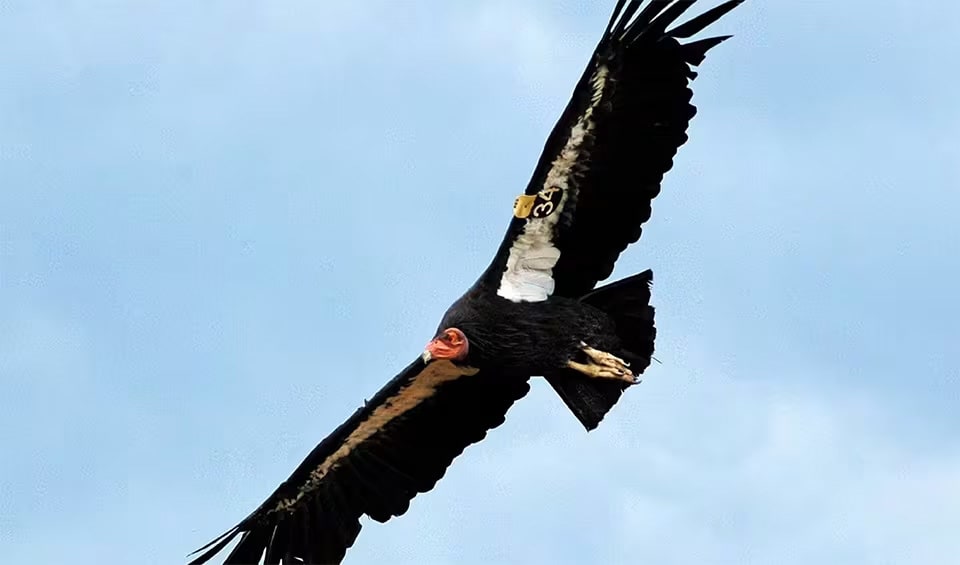An iconic species and a testament to conservation efforts, having been brought back from the brink of extinction. These majestic birds, the largest land birds in North America, have a commanding presence with a wingspan that can reach up to 3 meters (9.8 feet), allowing them to ride thermal currents with minimal effort.
Their plumage is primarily black with stark white patches underneath their wings, and they have distinctive bald heads ranging in color from yellowish-orange to pinkish-red, depending on the bird’s mood and health. This lack of feathers on the head is an adaptation for hygiene, allowing the carrion they feed on not to stick to their heads, thus preventing bacterial growth and disease.
California condors are scavengers, feeding exclusively on dead animals, and play a critical role in their ecosystem by disposing of carcasses. Their keen eyesight allows them to spot potential food sources from great distances as they soar at high altitudes.
The conservation history of the California condor is dramatic. By the mid-1980s, due to poaching, lead poisoning from ammunition in carcasses, habitat destruction, and other human-induced factors, the entire wild population was reduced to a few individuals. A controversial yet ultimately successful conservation decision was made to capture all remaining wild condors and place them into a captive breeding program. This effort has led to a slow but steady increase in their numbers, and they have been reintroduced into the wild in parts of their historical range in California, Arizona, Utah, and Baja California, Mexico.
Distribution
 Mexico
Mexico United States
United StatesAnything we've missed?
Help us improve this page by suggesting edits. Glory never dies!
Suggest an editGet to know me
Terrestrial / Aquatic
Altricial / Precocial
Polygamous / Monogamous
Dimorphic (size) / Monomorphic
Active: Diurnal / Nocturnal
Social behavior: Solitary / Pack / Herd
Diet: Carnivore / Herbivore / Omnivore / Piscivorous / Insectivore
Migratory: Yes / No
Domesticated: Yes / No
Dangerous: Yes / No





